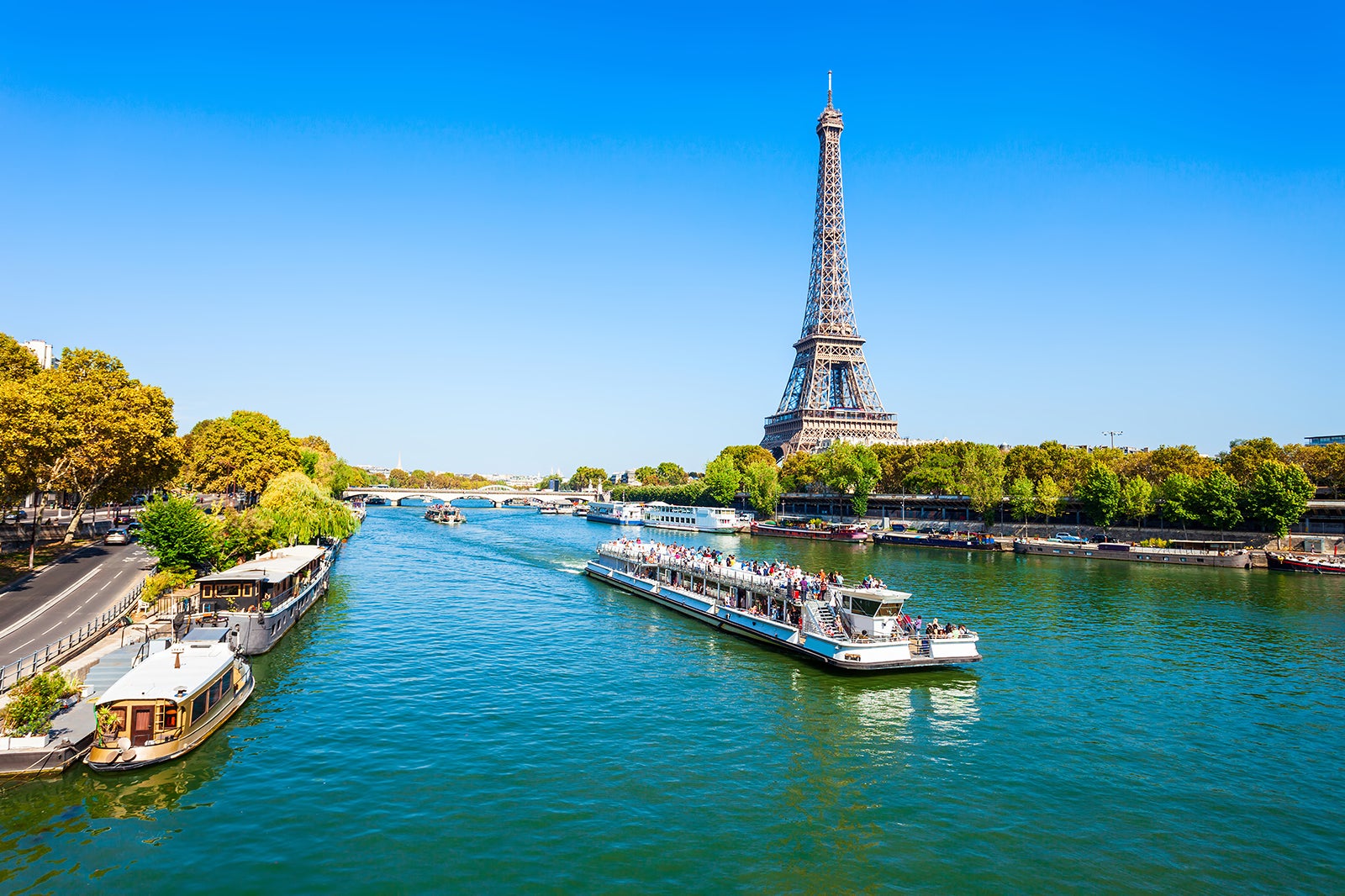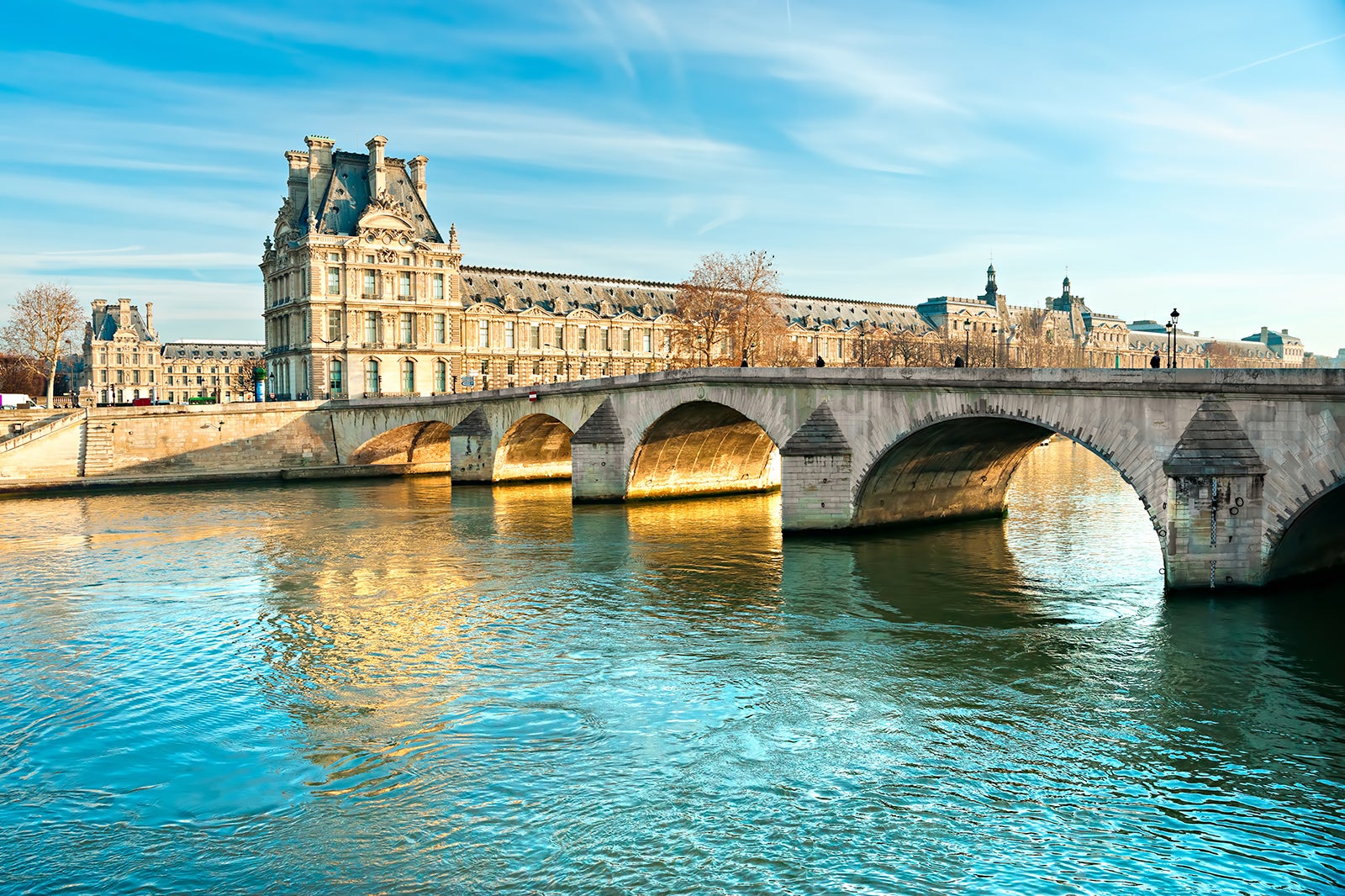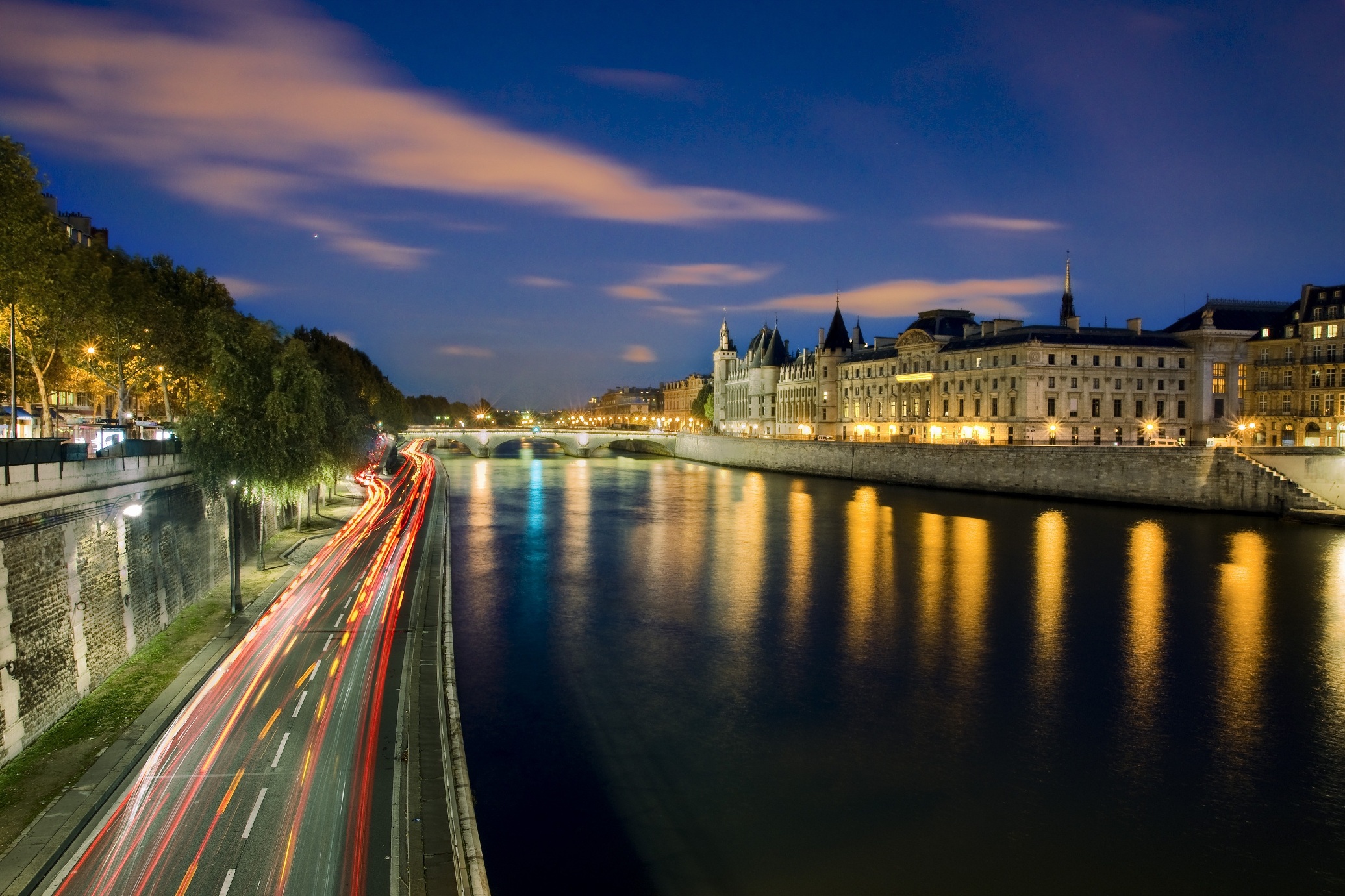Have you ever stopped to think about the waterways that truly give a city its unique feel? So, when we talk about Paris, that very special place, it's hard not to think about its main water path, the Seine River. It’s a truly central part of what makes the city, well, the city. This particular river, you see, moves with a sort of quiet grace right through the middle of everything, almost like a living ribbon connecting different parts of the urban landscape. It’s really quite something to behold, a genuine feature that many people come to see, and it helps to shape the overall experience of being there.
This waterway, known as the Seine, is more than just a simple stream; it's really a significant presence that helps to tell the story of Paris itself. It carries with it a sense of calm, even amidst the general hustle and bustle of a big place, and it offers a chance to see things from a different point of view. You know, it’s a spot where you can just take a moment and feel a connection to the city's past and present, all at once. It’s a pretty important piece of the picture, actually, a very defining element.
For those who visit, or even those who live nearby, the presence of the Seine is, in a way, a constant reminder of the city's enduring appeal. It's a place where history seems to gently flow alongside everyday life, and it helps to create that special atmosphere that Paris is so well-known for. You might say it's one of the main reasons people are drawn to this spot, providing a kind of natural path through its many wonders, almost like a guide.
Table of Contents
- The Seine River – Where Does It Begin?
- How Does the Seine River Shape the City?
- What Makes the Seine River So Special?
- The Seine River's Deep Roots in History
- Is the Seine River Easy to Travel On?
- The Seine River - A City's Lifeline
- More Than Just Water - The Seine River's True Heart
- Experiencing the Seine River Up Close
The Seine River – Where Does It Begin?
So, where does this famous waterway, the Seine, actually begin its very long and winding course? Well, it starts a little ways off, you know, about eighteen miles, or thirty kilometers if you prefer that measurement, northwest of a place called Dijon. That's really where its journey, as it were, gets going, pretty much from a quiet spot in the countryside. It’s a humble start for something that becomes such a central part of a major city, wouldn't you say? The water there, it just kind of bubbles up from the ground, beginning its slow trip toward the sea. It's quite interesting to think about how something so vast can come from such a small point, just a tiny spring, really, in a quiet, somewhat rural area. It’s a very natural process, and it sets the stage for everything that comes after, giving it a true sense of origin.
This starting point is located within what people call the Paris Basin. This area, you know, is a bit of a flatter stretch of ground, formed by the earth's natural movements over a very long time. It’s essentially a geological relative lowland, meaning it's a spot on the map that's naturally lower than the land around it. This basin, in a way, collects all the water that eventually feeds into the Seine, making it a sort of natural funnel for the river's entire system. It’s a pretty important feature of the land, actually, helping to guide the flow of water and shape the path the river takes. So, the river isn't just randomly flowing; it's following the natural contours of the land, which is kind of cool when you think about it.
How Does the Seine River Shape the City?
Once it gets going, the Seine river moves in a northwesterly direction. It sort of makes its way, you know, through the countryside first, and then it reaches Paris, flowing right through the heart of the city before continuing on its path. This movement, this steady flow, really does a lot to define the city's layout. It cuts through the urban area, in a way, almost like a natural dividing line, and it influences where things are built and how people move around. It's a very prominent feature, actually, one that you can’t really miss when you're there. The river helps to create different sections of the city, giving each side its own feel, but it also connects them, too, with all the bridges that go across it.
The entire area where water collects and flows into the Seine is known as the Paris Basin. This is the land that feeds it water, you see, and it’s a pretty big area, covering a lot of ground. All the rain and smaller streams in this zone eventually find their way to the Seine, making it a truly significant body of water. It’s a natural system, really, where everything drains down to this one main water path. This basin, in some respects, is what allows the Seine river to be as substantial as it is, providing a constant source of incoming water. It's like the river has its own very large, natural collecting area, which is kind of fascinating when you consider the scale of it all.
What Makes the Seine River So Special?
The Seine river, a very calm and well-known water path, moves with a gentle sort of movement right through the middle of Paris. It’s a truly iconic presence, you know, something that many people associate immediately with the city itself. This particular river is, in a way, much more than simply a body of water. It’s really a lot more than that, standing as a sort of living testament to the city's long and storied past. It's a place where you can feel the weight of history, just by looking at the buildings along its banks or watching the boats glide by. It helps to set the mood for the entire city, giving it a certain kind of charm and appeal that is pretty unique, actually.
It's also a kind of marker for the city's deep past and its way of living, its cultural heart, if you will. The Seine river, you see, is a symbol, a very clear one, of all the stories and traditions that make Paris what it is. Every bend in the river, every bridge that goes over it, seems to hold a piece of that history. It’s not just about the water flowing; it’s about the memories and the moments that have happened along its banks for hundreds of years. So, in some respects, when you see the Seine, you're looking at a piece of living history, a truly important part of the city's identity. It's a very powerful connection to the past, actually, and it helps you feel truly immersed in the Parisian experience.
The Seine River's Deep Roots in History
The Seine river stands out because it stretches for such a long way, more than 700 kilometers, which is a pretty impressive distance, you know. And its width, too, is quite something, allowing it to be traveled on by boats for a good part of its path. This means that, for a very long time, it has been a very important path for moving things around. It's been, in a way, a main route for getting goods and people from one place to another, serving as a kind of natural highway. Historically, this has been a truly crucial element for the development of the areas it passes through, especially Paris. It’s pretty clear that without this river, the city might not have grown in the same way, or at the same speed, as it did.
For centuries, the Seine river has been a sort of backbone for trade and transport, a very practical tool for daily life. People used it to bring in supplies, to send out goods, and to travel between different settlements. It was, in some respects, the main way to connect places before roads were as developed as they are now. This long history of use has really shaped the river's role in the region, making it more than just a natural feature; it's a working part of the landscape, too. It’s a bit like a very old, very busy road, but made of water, and it has played a very significant part in how things have changed over time, actually.
Is the Seine River Easy to Travel On?
Yes, the Seine river is quite easy to travel on for a significant portion of its length, which is a key characteristic that makes it so valuable. Its impressive width, you know, allows for boats of various sizes to move along its current, providing a practical means of transport. This navigability means that for a good part of its course, it's not just a pretty sight, but a functional waterway. It’s a pretty important detail, actually, because it means the river has always been more than just a natural boundary; it’s been a working route. This feature, the ability to be traveled on, has played a very significant role in how the areas along its banks have grown and connected with each other. It’s almost like a natural road that stretches for hundreds of kilometers, allowing for smooth passage.
This characteristic, the fact that you can travel on it for a lot of its journey, has made the Seine river a truly useful element throughout history. It's not just a narrow stream; it's wide enough to handle a good amount of traffic, whether it's goods being moved or people going from one place to another. So, in some respects, its physical dimensions are a big part of why it has been so important. It’s a very practical feature, really, that has allowed for consistent movement and connection over time. This aspect, its ease of use for transport, is something that has helped shape the history and development of the region, making it a very central piece of the picture, actually.
The Seine River - A City's Lifeline
The Seine river is, without a doubt, the prettiest street, if you think about it like that, in Paris, and it’s one of the main reasons people want to visit the city. It’s not just a river; it's a kind of open-air gallery, with so many famous sights lined up along its banks. You know, you can see so much of Paris just by being near the river or taking a boat trip on it. It offers a truly unique perspective on the city's charm and its many wonders. This makes it a very compelling draw for anyone looking to experience the true spirit of Paris. It’s a very central point of attraction, actually, and it helps to frame the entire city in a very special way.
The river Seine in Paris moves in a winding path right through the very center of the city, cutting it in two from one side to the other. It goes from the east, you see, all the way to the west, effectively dividing the city into two distinct halves, often called the Left Bank and the Right Bank. This winding movement isn't just random; it gives the city its unique shape and flow, influencing how neighborhoods are laid out and how people experience the urban environment. It’s a pretty fundamental part of the city's geography, actually, creating a natural division that has shaped its history and culture. So, the river isn't just passing through; it's actively shaping the very structure of Paris, making it a truly integral part of its identity.
More Than Just Water - The Seine River's True Heart
The Seine river is, in a way, a very calm and well-known water path that moves with a gentle sort of movement right through the middle of Paris. It's a truly iconic presence, you know, something that many people associate immediately with the city itself. This particular river is, in a way, much more than simply a body of water. It’s really a lot more than that, standing as a sort of living testament to the city's long and storied past. It's a place where you can feel the weight of history, just by looking at the buildings along its banks or watching the boats glide by. It helps to set the mood for the entire city, giving it a certain kind of charm and appeal that is pretty unique, actually.
It's also a kind of marker for the city's deep past and its way of living, its cultural heart, if you will. The Seine river, you see, is a symbol, a very clear one, of all the stories and traditions that make Paris what it is. Every bend in the river, every bridge that goes over it, seems to hold a piece of that history. It’s not just about the water flowing; it’s about the memories and the moments that have happened along its banks for hundreds of years. So, in some respects, when you see the Seine, you're looking at a piece of living history, a truly important part of the city's identity. It's a very powerful connection to the past, actually, and it helps you feel truly immersed in the Parisian experience.
Experiencing the Seine River Up Close
For those who visit, or even those who live nearby, the presence of the Seine river is, in a way, a constant reminder of the city's enduring appeal. It's a place where history seems to gently flow alongside everyday life, and it helps to create that special atmosphere that Paris is so well-known for. You might say it's one of the main reasons people are drawn to this spot, providing a kind of natural path through its many wonders, almost like a guide. Walking along its banks, you know, or taking one of those boat trips, really gives you a different view of the city, a truly relaxed way to take it all in. It’s a very popular activity, actually, and for good reason, too.
The river Seine in Paris truly offers a unique perspective, allowing you to see famous landmarks from a different angle. As it winds its way through the heart of the city, bisecting it from east to west, it provides a kind of natural stage for all the beauty that surrounds it. You can see the grand buildings, the lovely bridges, and the lively activity all from the water, or from a quiet spot along the pathways next to it. It’s a pretty calming experience, actually, and it helps you appreciate the scale and the history of Paris in a very personal way. So, it's not just a body of water; it's a whole experience in itself, one that truly defines a visit to this wonderful city.
This article has explored the Seine river, starting from its origins northwest of Dijon within the Paris Basin, a geological lowland. We've discussed its path through Paris, its impressive length of over 700 km, and its width which makes it navigable. The piece touched upon its historical significance as a crucial artery for transport and its role as a symbol of Parisian history and culture. Finally, we looked at how the Seine river serves as Paris’s most beautiful avenue, winding through the city and dividing it from east to west, offering a unique way to experience the city.


